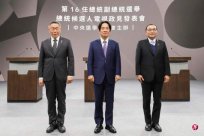China's photovoltaic industry is facing the problem of overcapacity. Insufficient overseas demand and local governments have superimposed on many factors such as photovoltaic installation machines. Some photovoltaic factories have begun layoffs or unpaid leave.
According to the Economic Observation Network on Wednesday (December 20), starting from November this year, the order volume of many photovoltaic factories has been reduced, so some of the "technical transformation" or unpaid leave leave without salary leaveThe front -line manufacturers were not able to do nothing and were forced to leisure, but the research and development line of the production base remained relatively stable.
At the 2023 photovoltaic industry conference held this month, Wang Bohua, Honorary Chairman of the China Photovoltaic Industry Association, revealed that from January to October 2023, the output of the photovoltaic manufacturing end increased by more than 70%year -on -year, new increaseThe installation was 142.56 Gava (GW), a year -on -year increase of 145%. The total output value of the manufacturing end exceeded 1.3 trillion yuan, and the export value of photovoltaic products was about $ 43 billion (S $ 57 billion).
Reporting analysis, the overcapacity and excessive inventory at the beginning of the year fail to digest the main cause of the current problem.
The local government plays an important role in this round of photovoltaic expansion.Some local governments have funds that support new energy. In addition, the solar industry, as a renewable energy industry chain, does not include the total energy consumption control, which is also very attractive to local governments.
In overseas markets, the energy crisis caused by the Russian -Ukraine conflict is high, and European component inventory is high.According to the European photovoltaic industry media Solarpower EUROPE, the EU's newly installed installation this year is 56 Gava, which is higher than its 48 Gilwa's target each year.Import restrictions have caused a large number of components to be returned to China.
There are also signs of saturation in China's domestic market.Some traditional photovoltaic installations in the north have been approved by few projects since July because of excessive installation.Guangdong, Anhui, Liaoning and other places have stopped distributed photovoltaic filing in September and October or tightened the approval of distributed photovoltaic construction.


